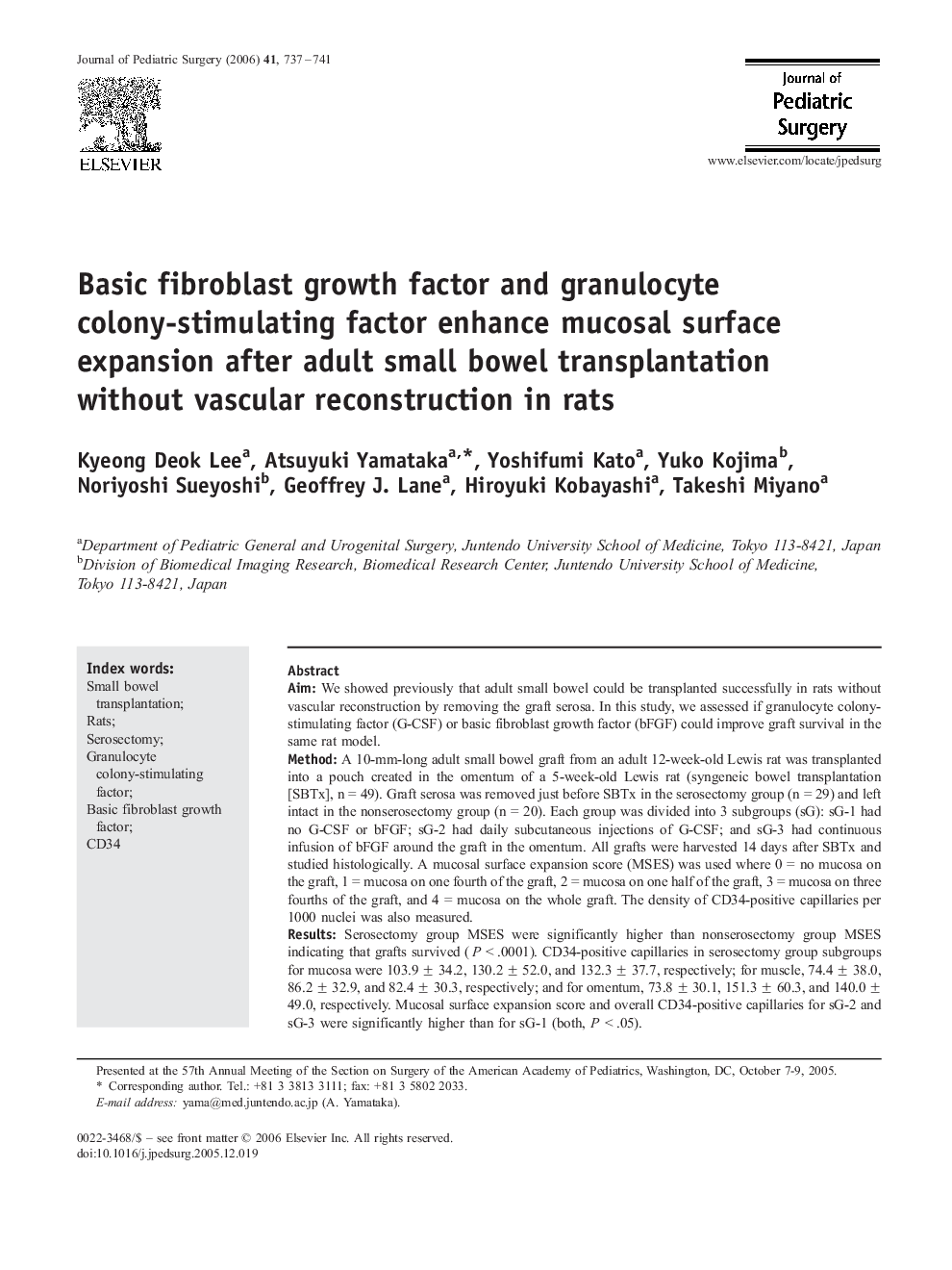| Article ID | Journal | Published Year | Pages | File Type |
|---|---|---|---|---|
| 4160606 | Journal of Pediatric Surgery | 2006 | 5 Pages |
AimWe showed previously that adult small bowel could be transplanted successfully in rats without vascular reconstruction by removing the graft serosa. In this study, we assessed if granulocyte colony-stimulating factor (G-CSF) or basic fibroblast growth factor (bFGF) could improve graft survival in the same rat model.MethodA 10-mm-long adult small bowel graft from an adult 12-week-old Lewis rat was transplanted into a pouch created in the omentum of a 5-week-old Lewis rat (syngeneic bowel transplantation [SBTx], n = 49). Graft serosa was removed just before SBTx in the serosectomy group (n = 29) and left intact in the nonserosectomy group (n = 20). Each group was divided into 3 subgroups (sG): sG-1 had no G-CSF or bFGF; sG-2 had daily subcutaneous injections of G-CSF; and sG-3 had continuous infusion of bFGF around the graft in the omentum. All grafts were harvested 14 days after SBTx and studied histologically. A mucosal surface expansion score (MSES) was used where 0 = no mucosa on the graft, 1 = mucosa on one fourth of the graft, 2 = mucosa on one half of the graft, 3 = mucosa on three fourths of the graft, and 4 = mucosa on the whole graft. The density of CD34-positive capillaries per 1000 nuclei was also measured.ResultsSerosectomy group MSES were significantly higher than nonserosectomy group MSES indicating that grafts survived (P < .0001). CD34-positive capillaries in serosectomy group subgroups for mucosa were 103.9 ± 34.2, 130.2 ± 52.0, and 132.3 ± 37.7, respectively; for muscle, 74.4 ± 38.0, 86.2 ± 32.9, and 82.4 ± 30.3, respectively; and for omentum, 73.8 ± 30.1, 151.3 ± 60.3, and 140.0 ± 49.0, respectively. Mucosal surface expansion score and overall CD34-positive capillaries for sG-2 and sG-3 were significantly higher than for sG-1 (both, P < .05).ConclusionOur results suggest that G-CSF and bFGF enhance angiogenesis and mucosal surface expansion.
